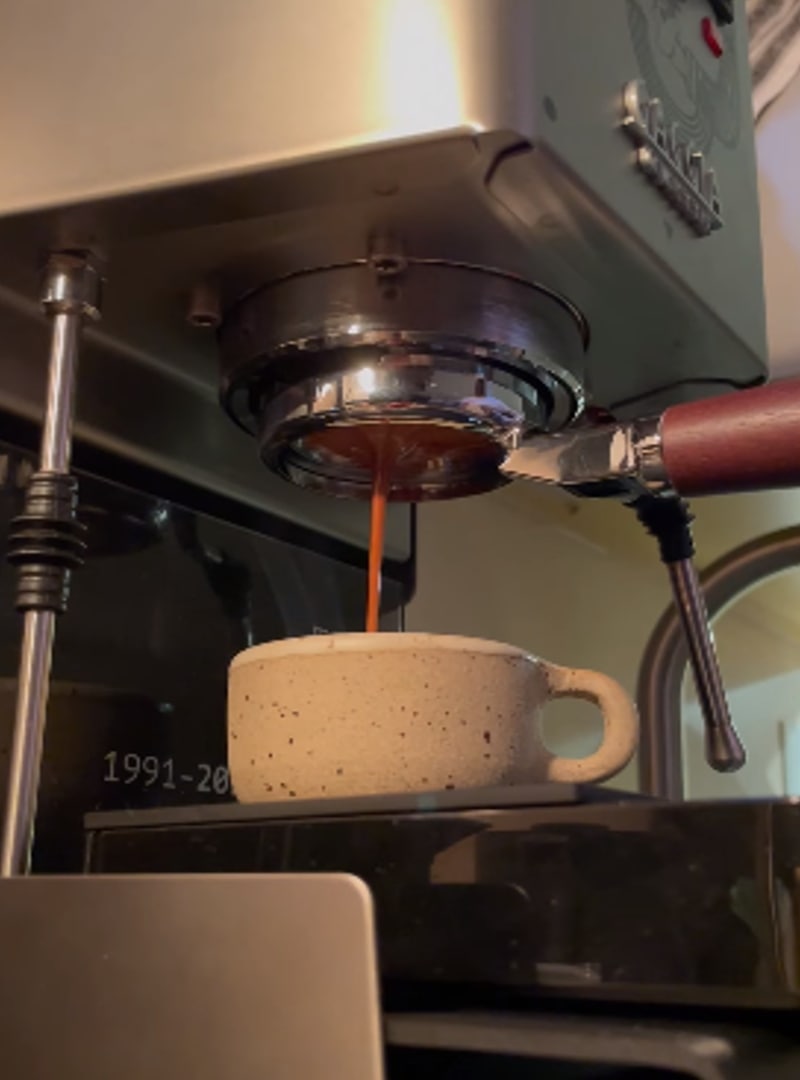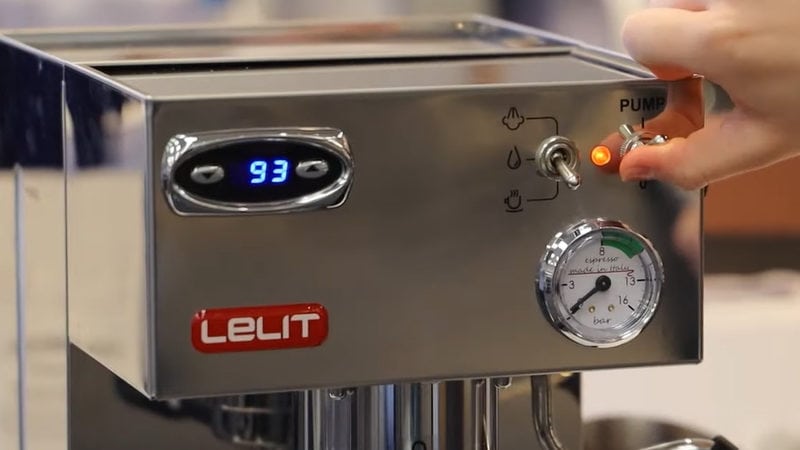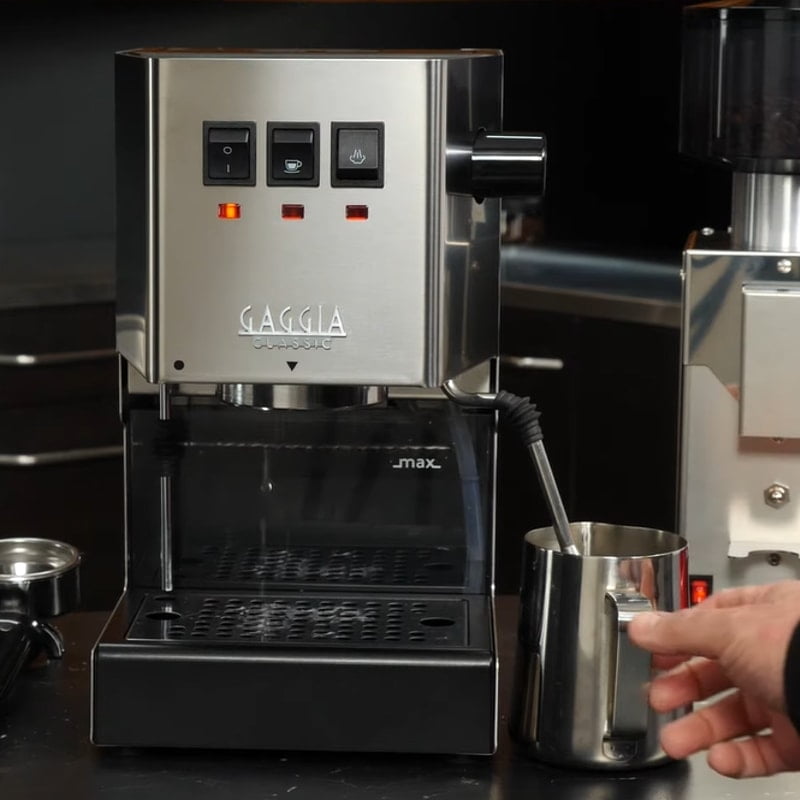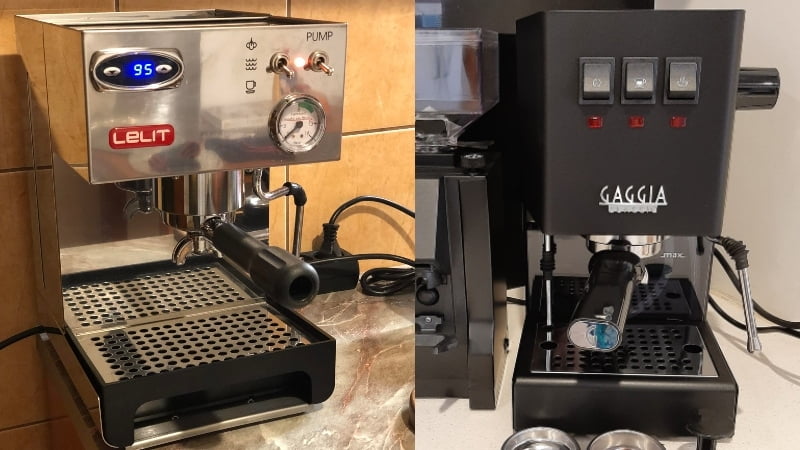In the debate of Lelit Anna vs Gaggia Classic Pro, I struggled to find the ultimate winner. And here is the result: Gaggia Classic Pro is the more optimum espresso machine.
Gaggia Classic Pro is equipped with a reasonably big water tank that can hold up to 71 oz of water. It can extract very rich espresso with thick crema. I like the industrial design of this model, which gives it a sturdy feel and quiet operation. As for the milk quality, it can froth milk foam perfectly for drinks like flat white and latte. I highly recommend this model for offices and big families for its cut-price offer.
As for Lelit Anna, I find this device’s overall design and performance excellent. There is no doubt that the quality of espresso and milk is good, just like Gaggia Classic Pro. However, judging from its price and features, I don’t think this is as great of a deal as the model above.
Lelit Anna vs Gaggia Classic Pro: Specs & Features Comparison Chart




Last update on 2025-04-10 / Affiliate links / Images from Amazon Product Advertising API
Lelit Anna vs Gaggia Classic Pro: Differences
Gaggia Classic Pro wins 3-2 agaisnt Lelit Anna. The truth is, I find their design and performance 90% similar, especially in terms of design and milk texture quality. But, some aspects make me consider Gaggia Classic Pro to be the better model.
Coffee Flavor: Gaggia Classic Pro
+Dosing + tamping
Since these machines are semi-automatic with no integrated grinders, we need external ones to grind beans, and the dosing and tamping steps are manual as well.
In the case of the grinder, it plays a massive role in deciding the flavor of espresso. A horrible grinder will cause a ruckus and deliver a lousy ground texture that is lumpy and uneven. So make sure that you get the best grinder to work with these babies.
We use portafilters with Gaggia Classic Pro and Lelit Anna in dosing and tamping. After grinding the exact amount that we need and getting coffee ground from an external grinder into the portafilter, we will manually tamp the ground and pluck the portafilter in place.
In general, in espresso machines in the low price range, manual dosing and tamping are 100% understandable. So Gaggia Classic Pro is the better option for me in this case, given that it’s only half the price of Lelit Anna. With the selling value of the later model, I think it should have had an automatic operation.

+Heating system
These machines use a single boiler to heat water and steam milk. So, as a result, the extraction and frothing processes will have to take turns. Between sessions, there will be a resting phase where the machines try to recover the temperature.
As for the temperature performance, I think they deliver a similar job. Even though Lelit Anna has PID control, there isn’t a big difference in the temperature performance of the pair. The drinks belong to the hotter side, slightly too hot to consume right away. Overall, I’m impressed with the temperature of the drinks.
Milk System: Tie
Gaggia Classic Pro and Lelit Anna come with integrated steam wands. After many tests, I find the milk texture ideal for drinks like a flat white, mocha, and latte. The thickest milk foam texture that I get from this pair makes excellent latte. As for cappuccinos, I don’t think this recipe is these machines’ specialty, given that the wands don’t froth dry microfoam.
Suppose you are wondering about the temperature of the milk. Steam wands to make hot foam instead of a cool one. Therefore, your lattes or flat whites will be hot and steamy.
Utilities: Lelit Anna
Lelit Anna has a more elaborate interface, given that it includes a manometer and a PID display. Thanks to the manometer, I know if the pump pressure is working just fine or not. It makes controlling the crema and the strength of espresso easier in this semi-automatic machine.

Also, Lelit Anna boasts of a giant 91.3 oz water tank. That’s why I think it’s very convenient offices and big families. If we press, it can be decent enough for coffee shops, even though it’s evident that it’s almost impossible to achieve optimum flavor from machines as affordable as Lelit Anna and Gaggia Classic Pro.
Cleaning & Maintain: Tie
Since the brew groups of both Lelit Anna and Gaggia Classic Pro are removable, we can clean them once every 3 weeks or 1 month without any problem.
As for other parts such as the shower screen or descaling the entire system, it will be more complicated. These cleaning cycles involve cleaning and descale solutions, which we will run through the brew path via the water tank and portafilter.
Design & Material: Gaggia Classic Pro
Thanks to the sturdy design of Lelit Anna and Gaggia Classic Pro, they don’t produce much noise and aren’t prone to damage either. I really like the industrial feel that these devices give off. As for the material, the pair is made mainly of stainless steel.
But why does Gaggia Classic Pro wins? Boasting the same features with half the price tag of Lelit Anna, Classic Pro seems a much better deal for me. This device offers the same value at a lower price. That’s why I find it worth the purchase more.

Lelit Anna vs Gaggia Classic Pro: Similarities
Gaggia Classic Pro and Lelit Anna are very straightforward espresso machines. They have a fair share of similar features, and here are the 2 that I find most important:
Cup warming tray
These espresso machines pay a lot of attention to temperature control, so I’m not surprised that they have a passive integrated cup warming tray. Since these models use a single boiler as the primary heating system, it’s expected that users have to extract espresso and steam milk one after another instead of consecutively.
My advice is that whenever you froth milk and already have a shot of espresso extracted, put the shot on the warming tray to keep the drink hot while working with the milk.
Silent operation
Thanks to their sturdy mounting design, Gaggia Classic Pro and Lelit Anna don’t vibrate much and thus, don’t produce much noise. I’m very impressed by this aspect, given that both models lean toward the classic design and don’t have many additional features. I think they would fit offices and big households perfectly.
Quick Rundown of Gaggia Classic Pro
- Solid Steel Housing, Made in Italy
- 9 Bar Espresso Extractions
- Stainless Steel 58mm Commercial Portafilter
- Commercial Three Way Solenoid Valve
- Commercial Steam Wand
Last update on 2025-04-10 / Affiliate links / Images from Amazon Product Advertising API
Quick Rundown of Lelit Anna
Product Videos
Related Articles to Gaggia Classic Pro
- Gaggia Classic Pro Vs Rancilio Silvia: Detailed Review & Comparison
- Gaggia Classic Pro Vs Quickmill 820: Top 4 Differences Between 2 Classic Espresso Machines
- Flair Pro 2 Vs Gaggia Classic Pro: Comparing 4 Crucial Aspects Of 2 Espresso Machines. Peculiar Vs Classic!
- Flair 58 Vs Gaggia Classic Pro: 1 Classic And 1 Alternative Espresso Machine. Which One Do I Prefer More?
- Rancilio Silvia M Vs Gaggia Classic Pro: 2 Straightforward Espresso Machines With Good Feedbacks. Are They For Real?
- Lelit Anna 2 Vs Gaggia Classic Pro: 2 Straightforward Espresso Machines For Beginners. Which Brews Better Coffees?
- Gaggia Classic Vs Gaggia Classic Pro: What Are The Differences?
- Gaggia Classic vs Pro: What Is The Most Iconic Semi-Professional Espresso Machine Under $500?
- Breville Bambino Plus Vs Gaggia Classic Pro: Which One Is Better?
- Breville Infuser Vs Gaggia Classic Pro: Which One Is Best For You?
- Breville Bambino Vs Gaggia Classic Pro: A Head-To-Head Comparison
- Breville Duo Temp Pro Vs Gaggia Classic Pro: Which Entry-Level Espresso Machine Is Better?
- Breville Barista Express vs Gaggia Classic Pro: Which Is Better Innovation?
- Gaggia Brera vs Classic Pro – What Is The Best Automatic Espresso Machine?
- Gaggia Carezza Deluxe vs Classic Pro: Which Is Best For You?
References:
- Gaggia Classic Pro: https://www.gaggia-na.com/products/gaggia-classic-pro
- Lelit Anna: https://lelit.com/product/anna-pl41tem/

Felix Hendricks is a skilled barista with over 12 years of experience. He excels in crafting coffee and has a strong foundation in coffee machine mechanics. Felix holds a Coffee Machine Maintenance Certification from the Coffee Equipment Technical Institute, showcasing his ability to diagnose and repair coffee machines. He’s also worked as a quality control specialist, selecting premium coffee beans for optimal flavor. Felix has a diverse work history, including stints at renowned coffee spots like Café Euphoria & Starbucks. His expertise in both brewing and machine maintenance makes him a respected figure in the coffee industry.
